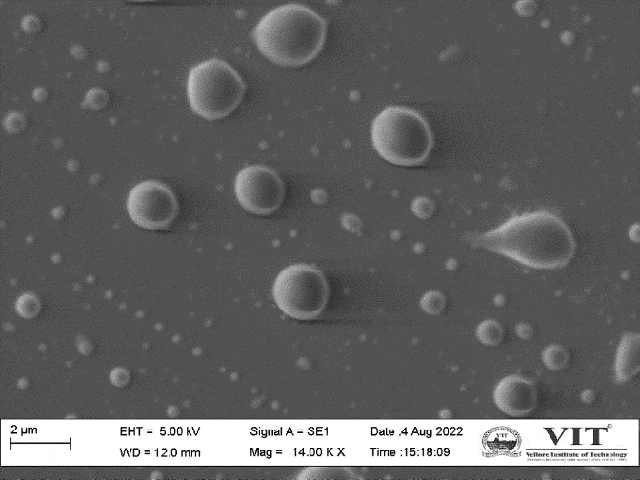Preparation, Characterization, and In Vitro Release Study of Resveratrol-Laminarin-Loaded Liposomal Formulation
DOI:
https://doi.org/10.5530/ctbp.2023.3s.55Keywords:
Resveratrol, Laminarin, Liposome, In vitro release, Encapsulation EfficiencyAbstract
<p style="text-align: justify;">The present study aims to formulate and evaluate the physicochemical characteristics of the resveratrol-laminarin encapsulated liposomal formulation. Resveratrol is a phytoalexin with numerous biological effects like antidiabetic, anti-oxidant, anti-cancer, and anti- inflammatory properties. A polysaccharide extracted from brown algae called laminarin possesses anti-tumor, anti-oxidant, anti-coagulant, anti-inflammatory, and antiobesity properties. Resveratrol, a hydrophobic drug, is entrapped in the liposomal bilayer, and laminarin, a hydrophilic drug, is enclosed in the hydrophilic core. The preparation and characteristics of resveratrol- laminarin-loaded liposomes, including their particle size, zeta potential, entrapment efficiency, and in-vitro release kinetics, were investigated in this study. The thin film lipid hydration method was used to prepare the liposome using soy phospholipids and cholesterol in a 6:1 ratio. Downsizing of the prepared liposomes was carried out by homogenization and sonication techniques. The liposome had a particle size of 120.7 nm after sonication, and a zeta potential of -33.4 mV was observed. The highest entrapment efficiency recorded for resveratrol is 90.69%, and 83.64% for laminarin. Biophysical characterisation of the prepared liposomes was carried out by scanning electron microscope and UV-visible spectrophotometry. The release study of resveratrol and laminarin was observed for six hours. A stable and steady release of the compounds was observed. The stability of the liposomes stored at 4ºC was analyzed after three months of preparation. In conclusion, the prepared liposomal formulations exhibited good physicochemical characteristics and are of great therapeutic value in the future.</p>



